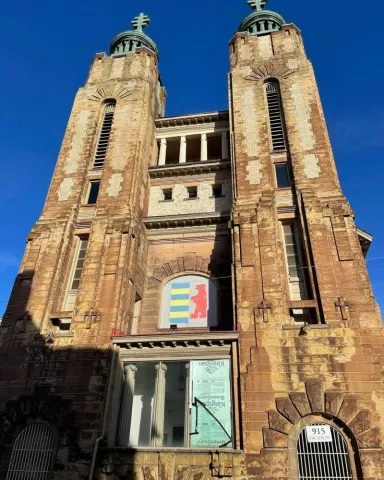Homestead
The Homestead area is comprised of the three boroughs of West Homestead, Homestead, and Munhall. The Homestead Historic District was listed in the National Register of Historic Places in 1990.
Homestead and Munhall developed around the Homestead Works of U.S. Steel; West Homestead's principal industry was the Mesta Machine Company. All three municipalities consist primarily of workers' housing constructed between 1890 and 1941.
Interspersed throughout the community are churches and other institutional buildings. The commercial core of the district is concentrated along Eighth Avenue, with most structures built of brick, 2 to 3 stories in height, and featuring Italianate or Romanesque Revival styles.
Homestead is famous for the 1892 strike, which pitted Henry Clay Frick, the chairman of Carnegie Steel Company against the Amalgamated Association of Iron, Steel, and Tin Workers, the powerful union representing the factory workers.On July 6, 1892, 300 Pinkerton Police hired by Frick clashed with the union workers and townspeople for 12 hours. Although the townspeople prevented the Pinkerton force from breaking the strike that day, the prolonged stalemate lasted until November 20, 1892. Mainly because of this decisive battle between management and the union, the role of unions in the steel industry was greatly diminished until their resurgence in the 1930s.


